Forthcoming publications
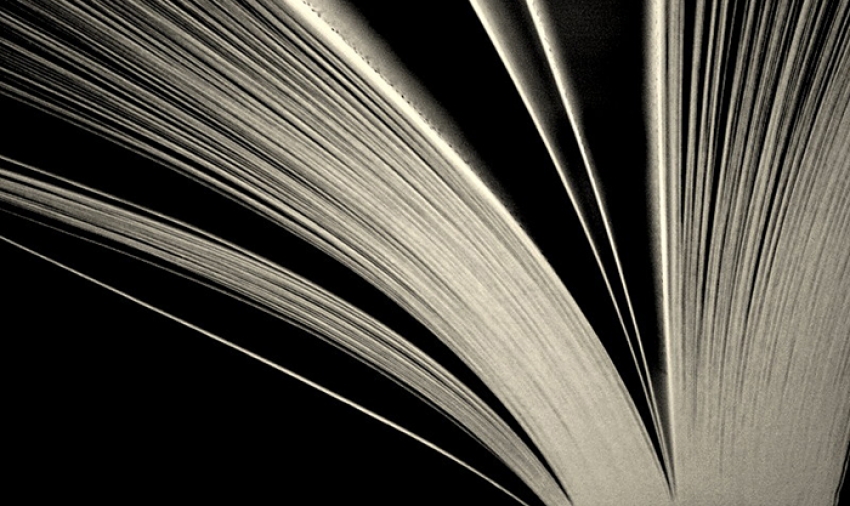
 A book - Emmanuel25 (Flickr) - CC BY-NC-2.0
A book - Emmanuel25 (Flickr) - CC BY-NC-2.0
Forthcoming publications
- Mario Del Pero, Justine Faure (dir.) , Décentrer la Guerre froide , Monde(s), n°18 , novembre 2020
- Laurence Bertrand Dorléac, Pour en finir avec la nature morte, Gallimard, nov. 2020
- Yves Léonard, Salazarisme & fascisme, Chandeigne, oct. 2020
- Simon Perego, « Pleurons-les. Les Juifs de Paris et la commémoration de la Shoah (1944-1967), Champ Vallon, oct. 2020
- Etienne Peyrat, Histoire du Caucase au XXe siècle, Fayard, oct. 2020
Foreign Students, Intellectuals and Artists in France in May-June '68
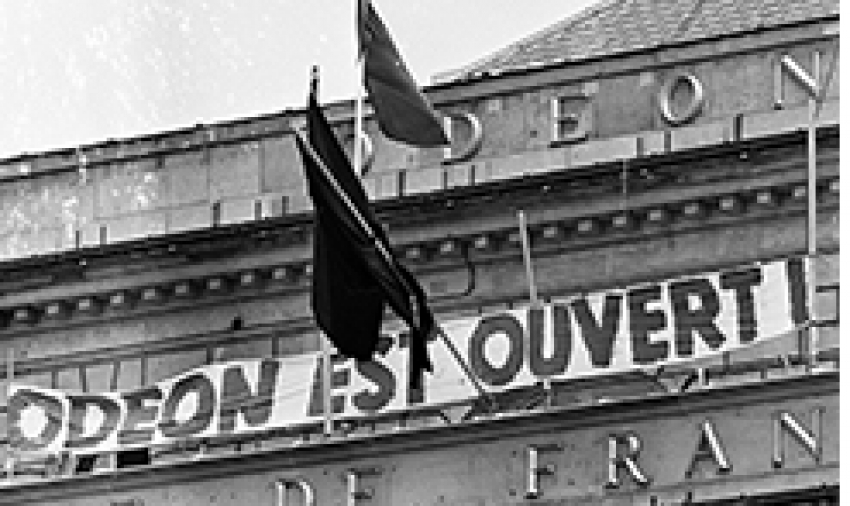
 Eric Koch / Anefo
Eric Koch / Anefo
Call for papers
Colloquium Foreign Students, Intellectuals and Artists in France in May-June ‘68.
11 and 12 February 2021 Paris, Centre d’histoire sociale des mondes contemporains / Campus Condorcet -Aubervilliers 93000
The historiography of the '68 years has recently favoured a global approach to social movements, emphasizing movement and exchange between countries and continents. This historiography is very rich, as is the one concerning more specifically the French May. Nevertheless, there are still some blind spots, or some areas that have not been explored. One of these is the role of foreign students, or more broadly foreign intellectuals and artists (writers, artists, musicians, teachers, etc.) in France in MayJune ‘68. This presence of foreigners in France has been the subject of studies when it comes to immigrant workers, whose significant participation in the May movement is now known. But the presence of students and/or intellectuals, and therefore their participation in the movement, is still largely ignored. Many of them studied in the French capital, or in other university towns in the area. They represented 5.7% of the total student population in 1968-1969, and this number sharply increased from the end of 1968. They were African (North Africa and sub-Saharan Africa), European (German, Portuguese, Italian, Spanish, Greek, British), South American, Israeli, North American (United States or Quebec), Palestinian. They generally adhered to the French May while implementing specific logics linked to the political and social conditions of their country of origin. [Read more (PDF, 160Ko)]
Deadline: 2020/09/30
Call for Papers | The Blue Pencil of Censorship
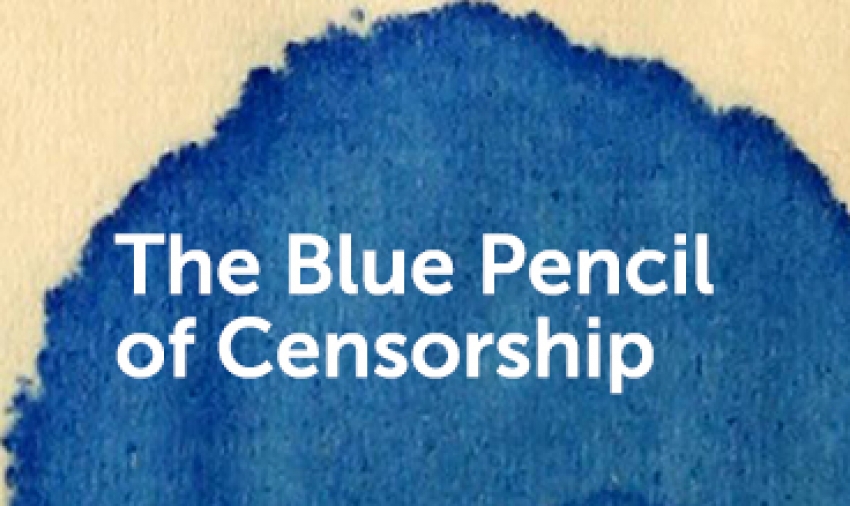
 Call for Papers - The Blue Pencil of Censorship
Call for Papers - The Blue Pencil of Censorship
call for papers
The Blue Pencil of Censorship: Controlling, Bypassing and Diffusing information in Non-Democratic Regimes in the 20th Century
International Interdisciplinary Conference (Junior Conference / CHSP)
Paris, France
October 2, 2020
Eugène Lyons, an American journalist accredited in Moscow in the late 1920s, recalled the regular censorship he encountered as a foreign correspondent there. His testimony not only reveals the direct constraints from the censors, but also the specific practices of reading the Soviet press under state control and the necessity for foreign journalists to master language and behaviour codes in order to exercise their job. In addition to that, it presents the multiple social interactions between rival journalists and censors, and the profile and daily practices of those in charge of censorship (Lyons 1938).
Lyons’ description departs significantly from the wide-spread image of a censor armed with a blue pencil and accomplishing a repressive state power act in a sort of social vacuum. Rather, it invites us to re-examine the censorship of information in non-democratic countries in the 20th century in a broader framework of social history with its focus on actors, their practices and circulations. This gives us a window to explore censorship from “a spectrum of actions that ranges from explicit prohibitions at one end and internalized, unconscious adherence to social norms at the other” (Sherry 2015). By analysing the subject of censorship we can question the very notion of a non-democratic regime that is traditionally defined by contrast to that of a democracy thus entailing a binary opposition. Recent studies have challenged this allegedly evident distinction by introducing such notions as “illiberal democracy” or “la démocrature”. These terms were coined in the late 20th century to define the hybrid regimes that can be characterized by some traits inherent to liberal democracies, but at the same time the authoritarian power typical of them conditions their classification as non-democratic.
[Read more (Word, 60Ko)]
100 years of the French Communist Party (PCF)
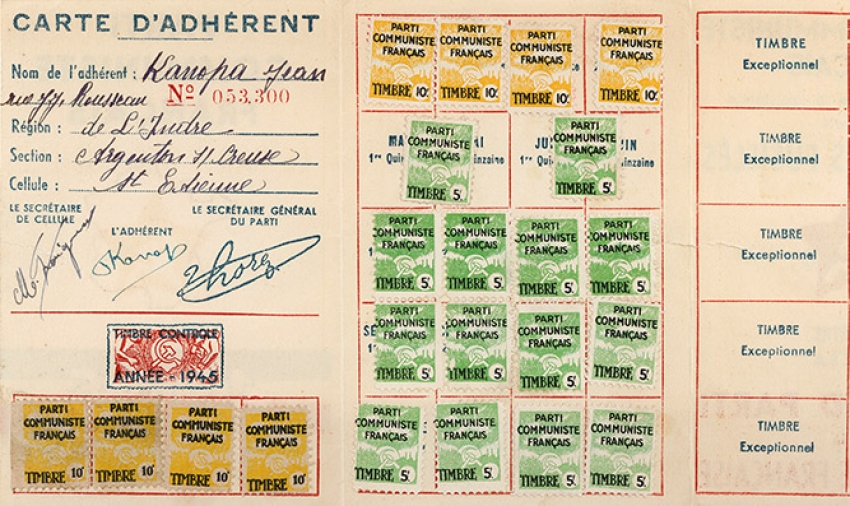
 Carte d’adhérent de Jean Kanapa, Fonds Jean Kanapa/Gérard Streiff (extrait)
Carte d’adhérent de Jean Kanapa, Fonds Jean Kanapa/Gérard Streiff (extrait)
Les 100 ans du Parti communiste français (PCF)
En 2021 le Parti communiste fête ses 100 ans. En effet, lors du 18e congrès national de la Section française de l'Internationale ouvrière (SFIO), plus connu sous le nom de congrès de Tours (du 25 au 30 décembre 1920), malgré les appels de Léon Blum à l'unité, la motion Cachin-Frossard en faveur de l'adhésion à la IIIe Internationale obtient 3208 voix, alors que la motion Longuet-Paul Faure pour le maintien de l'union ne recueille que 1022 voix. Ainsi est créée la Section française de l'Internationale communiste (SFIC), rebaptisée en 1921 Parti communiste (PC-SFIC).
Charles Tillon, membre du PCF dès l’été 1921, est une de ses figures emblématiques. En mars 1932, il entre au Comité central puis, en septembre, au Bureau politique comme suppléant. En mai 1936, il est élu député d'Aubervilliers et responsable de la section Paris-Nord. Après l'invasion allemande, il est membre du secrétariat clandestin. À la libération, il devient maire d'Aubervilliers et est réélu député de la Seine en 1945. Il occupe différentes fonctions ministérielles : ministre de l'Air (1944-1945), ministre de l'Armement (1945-1946), ministre de la Reconstruction (1947). En mai 1947, il est évincé du gouvernement avec les autres ministres communistes. Le 1er septembre 1952, il est exclu du Bureau politique puis écarté de toute responsabilité. Réhabilité en février 1957, il est exclu définitivement le 3 juillet 1970.
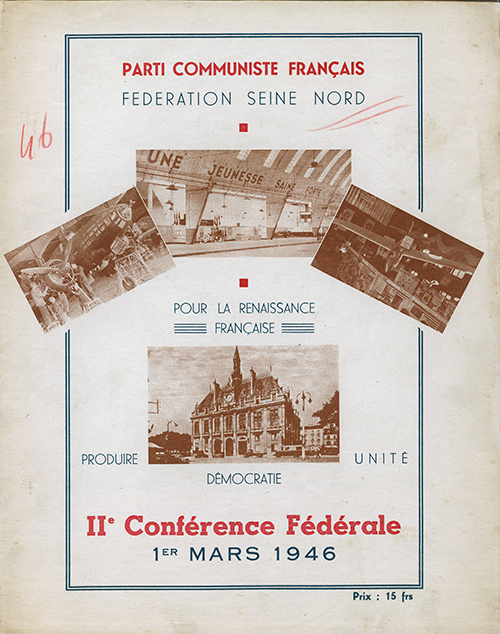
Ci-contre : Brochure de la 2e conférence fédérale du Parti communiste français, Fédération Seine Nord, 1er mars 1946, Fonds Charles Tillon, CT28 Dr1. Centre d'histoire de Sciences Po - Archives d'histoire contemporaine. Tous droits réservés.
Ses archives, conservées aux Archives d’histoire contemporaine (AHC), illustrent notamment la présence du PCF lors des élections municipales de 1944 et 1947 avec des tracts et professions de foi.
Plusieurs documents concernent également l’activité du groupe communiste à l’Assemblée nationale et son action de député avec ses interventions et propositions de lois. Mais ce fonds permet également de suivre le fonctionnement du PCF à travers les journaux internes, les bulletins intérieurs ainsi que les brochures éditées notamment lors des conférences fédérales.
Le fonds Kanapa/Streiff, qui est également conservé aux AHC, est composé de documents qui ont servi à l'élaboration d'une thèse de doctorat d'histoire soutenue par Gérard Streiff à l’IEP de Paris en 2000, sous la direction de Jean-Noël Jeanneney. Cette riche documentation retrace la carrière de Jean Kanapa au sein du PCF auquel il adhère à la libération. Il est une des principales plumes du Parti et est notamment correspondant de l'Humanité à la Havane puis à Moscou. Proche conseiller du secrétaire général Waldeck Rochet, il accompagne ce dernier dans certains déplacements internationaux. En 1972, il est le responsable de la section de politique internationale, assurant ainsi les relations avec le Parti communiste de l'Union soviétique (PCUS). Ce fonds contient de nombreux documents montrant les relations existantes entre le PCF et le PCUS ainsi que des documents de propagande donnant des arguments aux adhérents pour contrer les antisoviétismes.
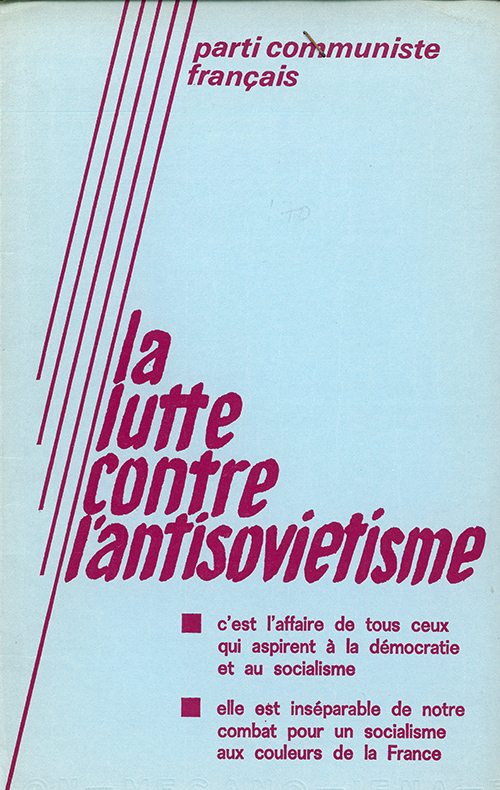 Le fonds Paix et Liberté (en cours de traitement aux AHC), mouvement anticommuniste des années 50, permet d’étudier la propagande anticommuniste et, à travers elle, le PCF.
Le fonds Paix et Liberté (en cours de traitement aux AHC), mouvement anticommuniste des années 50, permet d’étudier la propagande anticommuniste et, à travers elle, le PCF.
Les archives électorales du CEVIPOF contiennent également de nombreux tracts, affiches, professions de foi et bulletins de vote des élections des IVe et V e Républiques dont une partie est numérisée et accessible en ligne. Un autre fonds renferme des tracts politiques hors élections pour le PCF et les
mouvements communistes dès 1951.
Légendes :
- Brochure de la 2e conférence fédérale du Parti communiste français, Fédération Seine Nord, 1er mars 1946, Fonds Charles Tillon, CT28 Dr1. Centre d'histoire de Sciences Po - Archives d'histoire contemporaine. Tous droits réservés.
- Dossier de propagande "La lutte contre l'antisoviétisme", 1973, Fonds Jean kanapa/Gérard Streiff, KAS 3 chemise 7 n° 156. Centre d'histoire de Sciences Po - Archives d'histoire contemporaine. Tous droits réservés.
[EG et GVH 05/03/2021]









